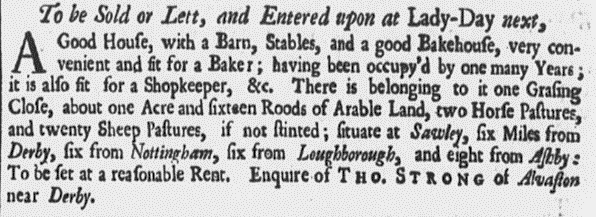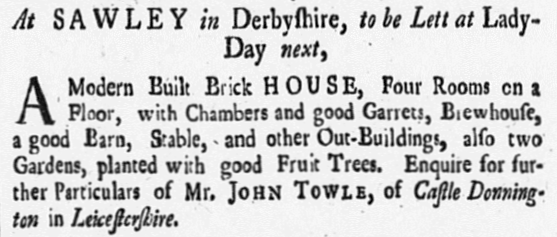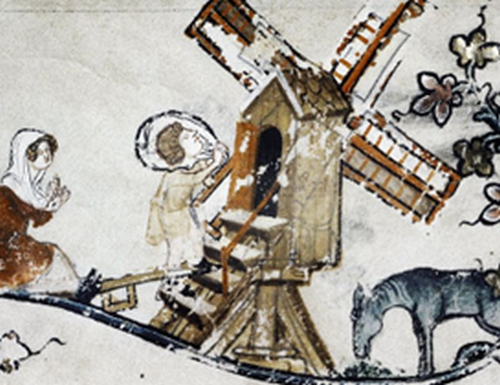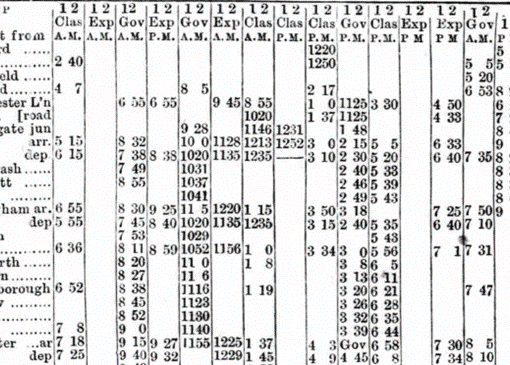Here are some advertisements from the 1730s and 1750 found in the Derby Mercury newspaper. Whilst its not (yet) possible to work out which houses are referred to; it’s worth looking at the meaning of some of the terms used.
The Derby Mercury ran from 1732 to 1900. From 1882 to 2008 Sawley’s local paper was the Long Eaton Advertiser.
Messuage. This means a house together with its outbuildings and adjacent land. The legal definition is still current, but the term was often used in adverts for houses in the 18th and 19th century.
Lady Day (the Feast of the Annunciation) is 25th March. It is the first of the English quarter days (the others being Midsummer Day (24 June), Michaelmas (29 September) and Christmas (25 December). The cross-quarter days are Candlemas (2 February), May Day (1 May), Lammas (1 August), and All Hallows (1 November). Until 1752 Lady Day was the first day of the civil year in England, Wales and the American colonies (from 1752 it became 1 January to harmonise with Scotland). In the same year the Julian calendar was replaced by the Gregorian calendar, which meant dates advanced by 11 days. So, the ‘old’ Lady Day under the Julian calendar would now be 5th April, which is still the end of the British tax year.
Spelling. Notice that, except at the end of words, ‘f’ (without the cross piece) is used instead of ‘s’ although it was pronounced the same way as ‘s’. This practise died out later in the 18th century.
Copyhold. Until after the Peasants Revolt (1381) English villagers were either serfs, villeins or freemen. A serf had few rights and was required to work for the lord of the manor in exchange for a house and enough land to feed his family. He was, in theory, a slave and could not leave or marry without the lord’s permission. A villein was a comparatively free tenant, paying the lord of the manor for his land in rent and/or service. Serfdom gradually died out in England in the 15th century and was finally abolished by Elizabeth I in 1574. Thereafter the land formerly held by serf tenure or rented by a villein was held as a copyhold tenancy. As part of the contract, the occupiers were expected to do some work in the lord’s fields. But over the years this became confined to occasions such as harvest-time. The title of the tenancy was held in a copy of the court roll (thus the term copyhold). Copyhold tenancies were gradually replaced by freehold tenancies, until abolished 1925, although the lords of the manor often retained mineral and sporting rights over the land.
An acre is an area of land equivalent to one chain by one furlong (66 by 660 feet), or 10 square chains. It was traditionally the area of land that could be ploughed by one man using a team of oxen in one day. A rood is a quarter of an acre.
A croft is an enclosed area of arable land. In Scotland a croft would also contain a cottage, but in the Midlands it was more likely to be associated with a nearby house. A close was also an enclosed area of land, possibly following enclosure of part of an open field.







